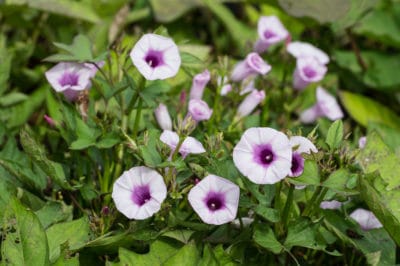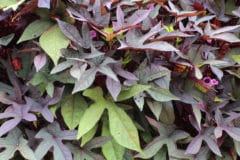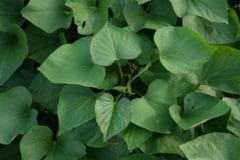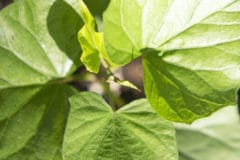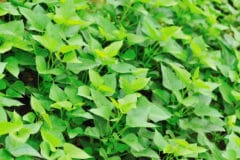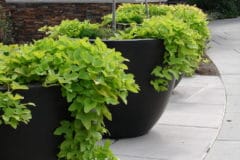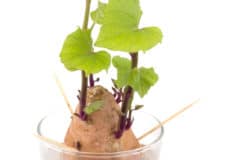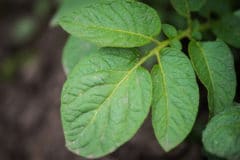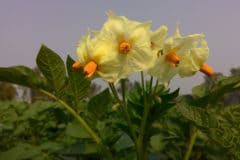Sweet Potato Background
Sweet potatoes are tropical, perennial vines that may have originated in India, although until recently, scientists thought the plant was a South American native. The plants produce edible tubers as well as leaves. Relatives of the familiar garden morning glory, sweet potatoes have the Latin name Ipomea batatas. In their native habitat, the plants will produce flowers.
Edible or Ornamental
Both edible and ornamental sweet potatoes go by the same Latin name, so pay close attention to the cultivar name to ensure you have the right plant. Although neither is grown for its flowers, in hot climates with a long day length, either might produce some flowers. Daytime and nighttime temperatures should be very warm – 90°F (32°C) and above in the day and at least 60°F (16°C) at night.
Sweet Potato Flower Appearance
The flowers of a sweet potato resemble those of morning glories. Each flower has a deep tubular throat with a flaring flat rim. The interior of the throat is usually purple or blue, while the rest of the flower is white. The flower is rich in nectar and attracts bees, the primary pollinator. Green sepals surround the bottom of the flower, which is about 1 ½ to 2 inches long and slightly less in width.
Flowering
Sweet potato flowers are early birds, opening right after daybreak, like their morning glory cousins. The flowers remain open for only part of the day and have usually faded by noon. Flowers sprout from the junction of leaf and stem and may appear singly or in clusters of 20 or more. If the plant produces flowers, it is most likely to do so at the end of the growing season.
How to Encourage Flowering
Scientists have tried various strategies to get sweet potatoes to flower. Try these:
- Grow the vine in a pot and let it get root-bound.
- Don’t use high-nitrogen fertilizer; it encourages leaf growth only.
- Keep the humidity high and the soil damp but well-drained.
- Clip the ends of the vine to stimulate growth in the flower axils.
Leaves Instead of Flowers
If you’re more interested in decorative effects than tubers, consider ornamental sweet potatoes. While they are unlikely to flower in most gardens, the leaves are very showy. Sweet Carolina has dark purple leaves, while Blackie’s foliage is nearly black and deeply cut. The variety called Marguerite is chartreuse and has heart-shaped leaves. Tricolor is variegated in pink, green and white.
